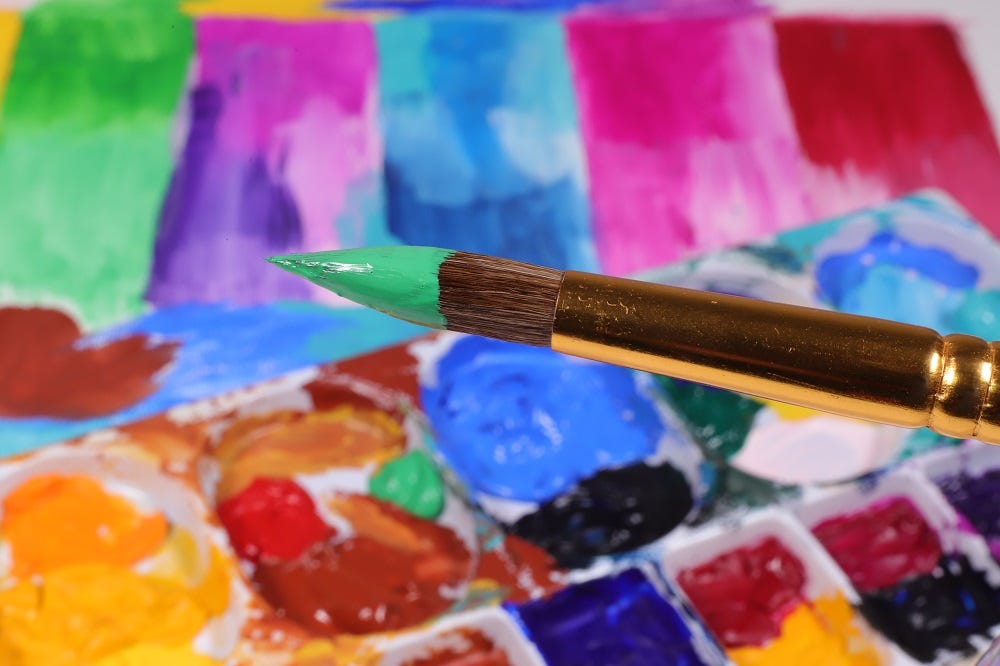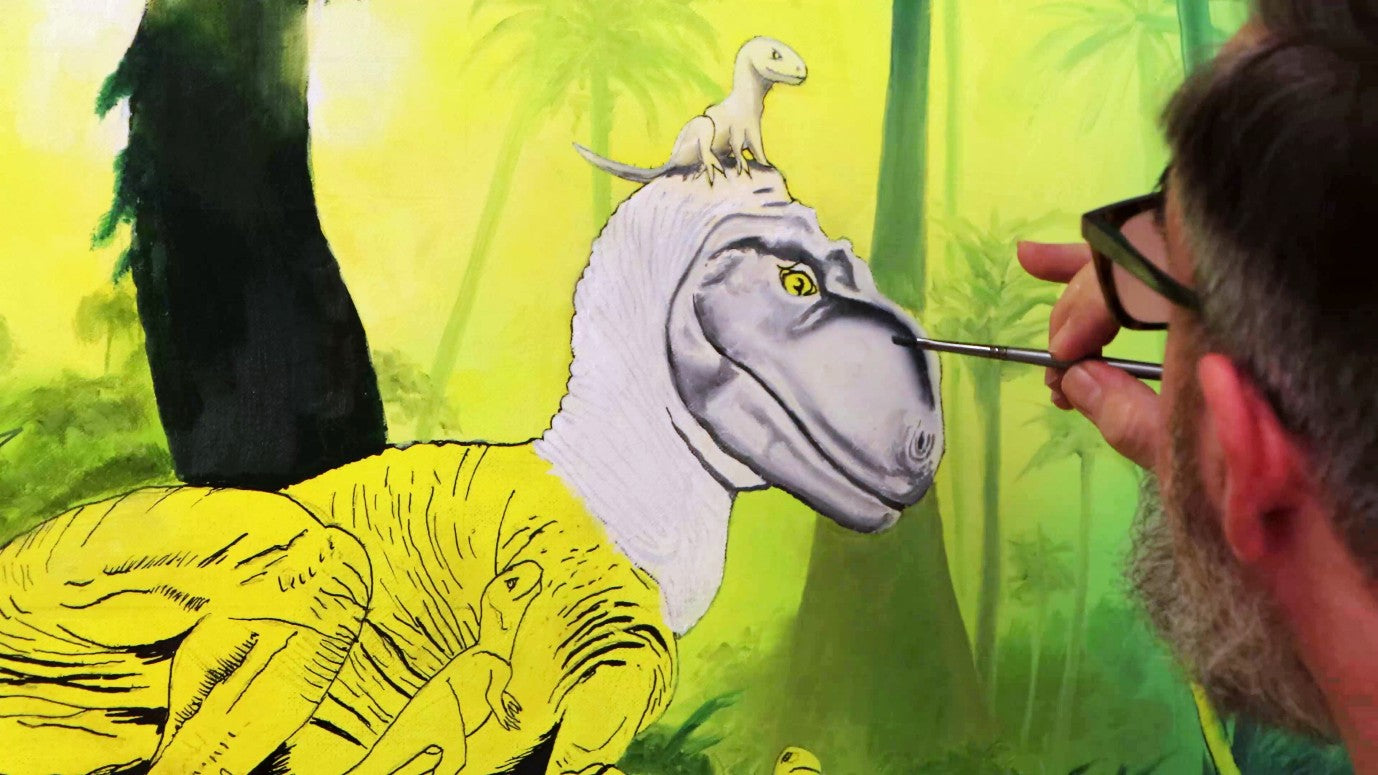It started with graphic designers and poster artists in the 1900’s, who brought gouache to the forefront. Liked for its velvety and matte finish, gouache was easy to work with and made designs easier to photograph. Today, gouache is still enjoyed by many and used everywhere from landscapes to portraits.
Known for its quick drying time, it’s no secret that gouache can be tricky to work with, but we’ve rounded up some of our most frequently asked gouache questions to help out.
What is gouache?

Gouache, (pronounced “gwash”) is a water-medium paint that dries quickly to an opaque, matte finish. Unlike watercolour, gouache is not transparent and has a high level of permanence, meaning it’s less likely to fade. Gouache can be thinned with water to create transparent colours or mixed with white paint to increase the opacity, so you can dial up or dial down your opacity levels.
What is acrylic gouache?

Acrylic gouaches are still fast drying and opaque with a matte finish, like their original gouache mates. The main differences are that acrylic gouaches are water-resistant when they dry and slightly duller than the real deal.
What is gouache paint used for?

Gouache is very versatile and can be used to create quick sketches and capture action and energy, because of its quick drying time. You can paint everything from still lifes and portraits to cartoon designs, stunning landscapes or paint en plein air and capture those quick sunset moments.
What can you paint gouache on?

Because of gouache’s thick film, lightweight papers should be avoided, so it’s best to stick to painting gouache on watercolour paper (like a 300gsm paper) cardboard, wood or painting wood.
How do I make gouache waterproof?

Although gouache is less likely to fade, it needs to be properly sealed to avoid any contact with moisture. If gouache paint becomes moist, it will return to its original paint state. So, to best care for your finished gouache masterpieces you will need to waterproof them. This is easy, just take a small brush and seal your works with an enamel varnish or a linseed oil-based varnish.
How can I stop gouache from drying so quickly?

Some people love the quick working window with gouache and others find it frustrating. If your gouache is drying out too quickly, it is a simple to fix, gouache can be brought back to life by using a wet brush, like you would use in a watercolour. Or grab a spray bottle and spritz over larger areas, to stop a palette from drying out the same way.
Which is better watercolour or gouache?

It’s definitely all about personal preference. Like watercolours, gouache can be thinned with water for a lower opacity, however gouache can work better on coloured papers, this is because gouache is opaquer than watercolour.
Can I use gouache with watercolours?

Yes you can! In fact, gouache is great to patch up any watercolour mistakes, just be sure to work with watercolours first and gouache second, as watercolours are thinner in opacity and gouache is thicker.
What brushes are best for gouache?

Watercolour brushes can be used for gouache and acrylic bristle brushes can be great for creating textural marks. Watercolour brushes will often have an aluminum ferrule to stop rusting when it comes into contact with water, and may be better in the long run. Both synthetic and natural brushes are great depending on your personal preference. Synthetic bristles retain their spring, whereas natural hair brushes can create glazing and layering without upsetting the layers of paint underneath.
How do you paint with gouache?

How you use gouache is entirely up to you. Work straight from the tube or add some water to thin out the opacity of the paint. When wet, gouache can be scrubbed, scratched back and even scumbled and like watercolour, you can try dry brushing and colour blending with your gouache paints, the options are endless.
How do I store gouache?

It’s best to keep your gouaches in a cool, dry place and out of direct sunlight. You can savor your gouache paints from your palette by sealing your leftover gouache paint in an air tight container and reactivating them with water to bring your old paint back to life.
Why is my gouache cracking?

Gouache can crack if the layers have been applied too thickly in one spot. To stop cracking, you can take off the cracked surface with water, before applying a thin layer. It’s also recommended to stick to a rigid surface such as wood, cardboard or watercolour paper. A surface that is too thin can cause cracking.
What mediums can I use with gouache?

It’s best to keep mediums to a minimum when it comes to gouache, too many layers can make your rich colours look ‘plasticy’ and possibly crack. Water will keep your gouache transparent and white paint such as China White can increase the opacity.
To keep your works waterproof, reach for an enamel varnish or a linseed-oil based varnish. You can prime your surface with a gesso, such as our Premium Clear Texture Gesso, or use the gesso over gouache paint. You can also mix gouache with impasto for added dimension. Mix the impasto half and half with gouache to make a thick, workable paste. Then apply with a knife or a brush for textured effects.
We recommend doing a test run before adding a touch of a medium to your gouache masterpiece.
Want more? Check out our beginners guide on how to use gouache, get started and browse our gouache range or try some of our gouache projects, like this art nouveau painting or this Sci-fi concept art.





























